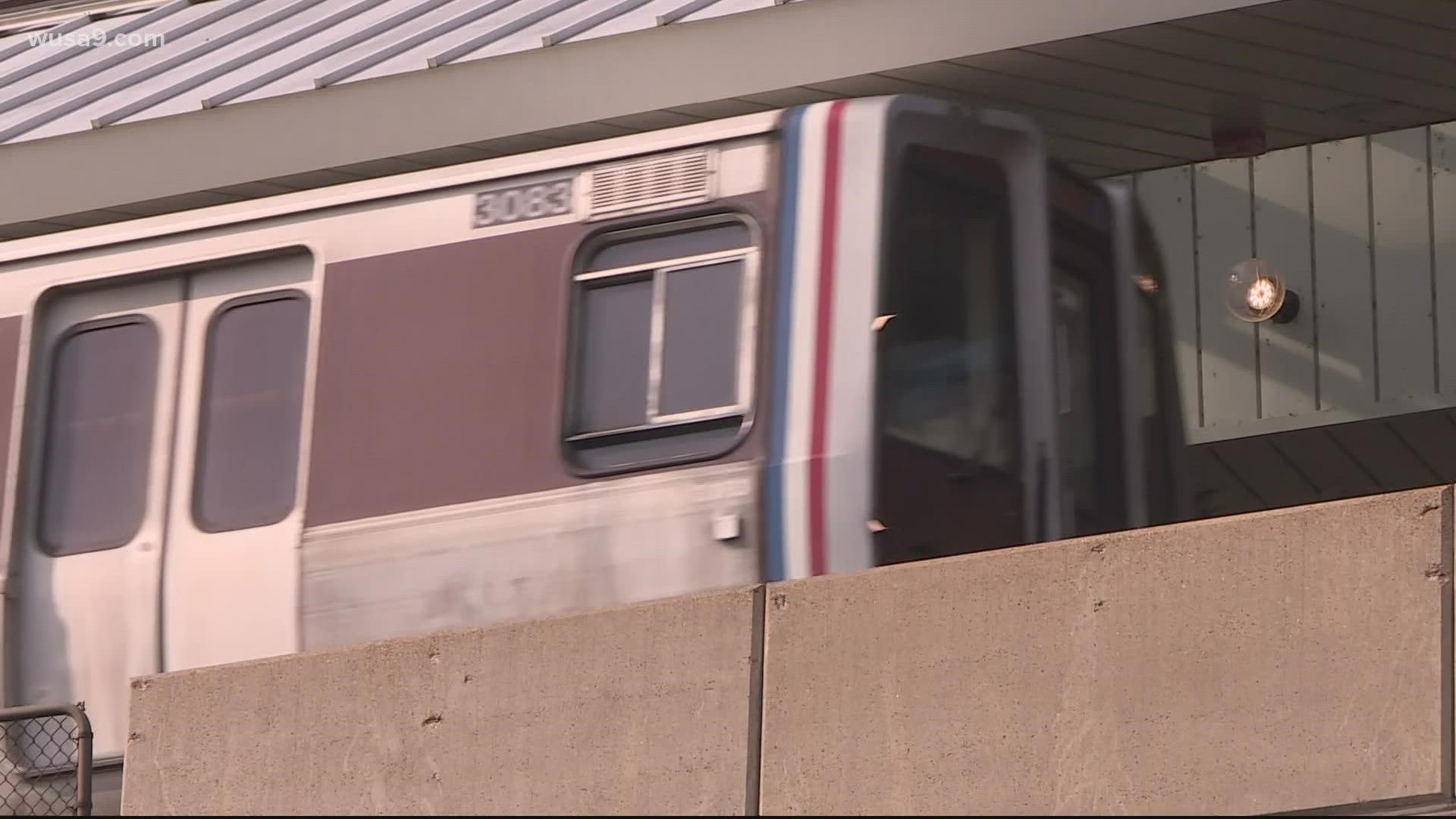VIENNA, Va. — Metro officials are expected to join the National Transportation Safety Board (NTSB) on Tuesday to watch the testing of nonconforming wheelsets after a train derailment revealed some faulty parts to the system.
WMATA General Manager Paul Wiedefeld held another meeting on Monday to discuss the updates on service, Metro safety actions and return of the 7000-series trains after 60% of the fleet was removed over safety concerns.
Wiedefeld said the Washington Metrorail Safety Commission (WMSC), manufacturer Kawasaki and its subcontractor ORX will be a part of the inspection at one of the plants in Pennsylvania and the Greenbelt yard to further determine what went wrong.
A WMSC order revealed NTSB found an axle of a railcar that derailed in Arlington nearly two weeks ago was "out of compliance with the 7000 Series specifications for the wheel and axle assembly."
As of Monday, 728 of the 748 rail cars have been inspected. Out of the 2,900 axles, 18 were out of alignment, according to Wiedefeld.
The investigation continues to prolong widespread Metro delays. Commuters should expect all lines except the Red Line will run every 30 to 40 minutes for at least the rest of the month.
Since moving to the DMV three months ago, Georgetown University student Harsha Gudda has relied on taking the train from the Spring Hill Metro stop. The travel time has taken longer, which would sometimes prompt him to take a cab to get to school.
"This brings a lot of uncertainty so I'm forced to use a cab and those are really expensive," Gudda said. "It's frustrating, but I'm getting used to it."
Transportation officials are in the process of moving older model trains out of storage and back in service. There were 31 trains in service on Monday.
The plan is to continue to place the 2000 and 3000-series cars back on the lines and moving a number of train sets out of the Shady Grove yard once service inspection is completed.
An additional train set will be added to the Green Line. Returning the 6000-series cars is also a high priority in hopes of adding 12 more train sets over the next several months.
Having the older models fully operate to meet ridership needs and avoid over-crowding could take up to two weeks.
"We're not going to rush that, we're going to do it in a safe manner and as quickly as we can but it's going to be safe when we do it," Wiedefeld added. "I understand from a customer perspective it's clearly not what we want to offer, but it's the safest thing we can offer."
As of Friday, Metro officials said they have noticed a slight drop in ridership. They usually average 186,000 riders daily but noticed a decrease of about 20,000 since the derailment.
NTSB said it found evidence that the Blue Line rail car that derailed also re-railed at least twice before it finally got stuck in the tunnel before the Arlington Cemetery. Investigators believe there could have been more derailments on the days leading up to the incident.

